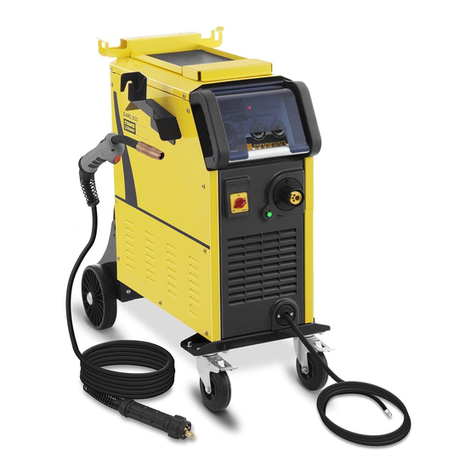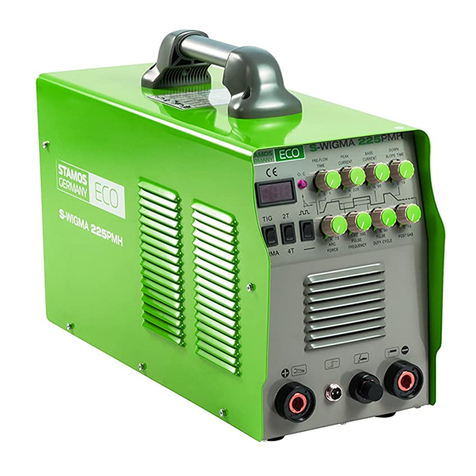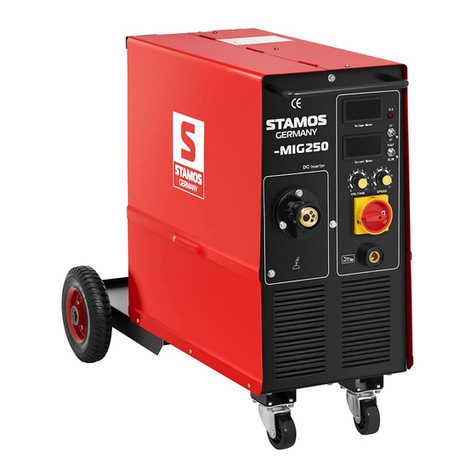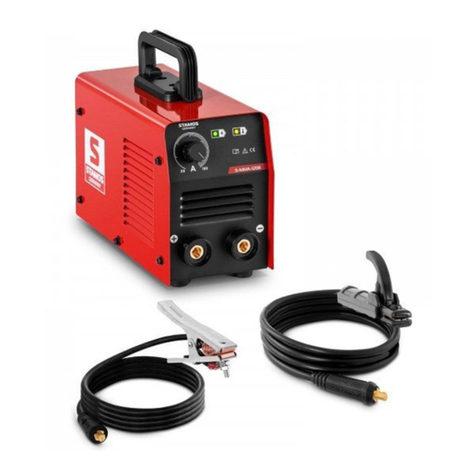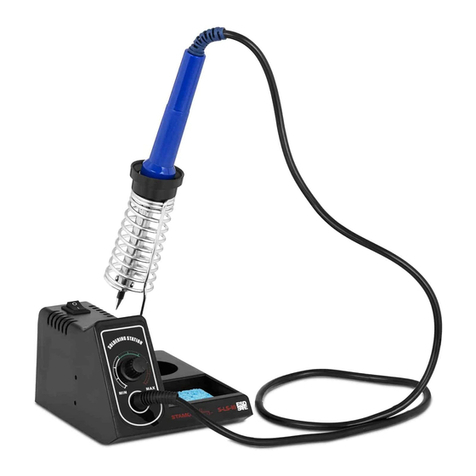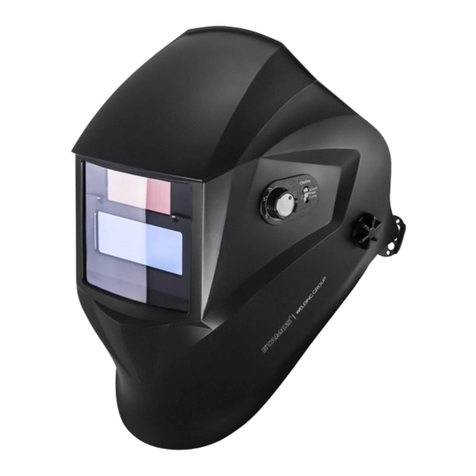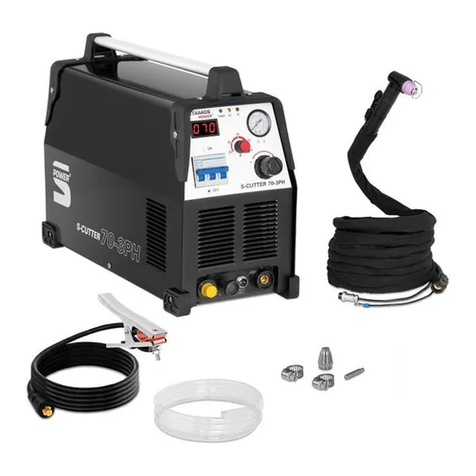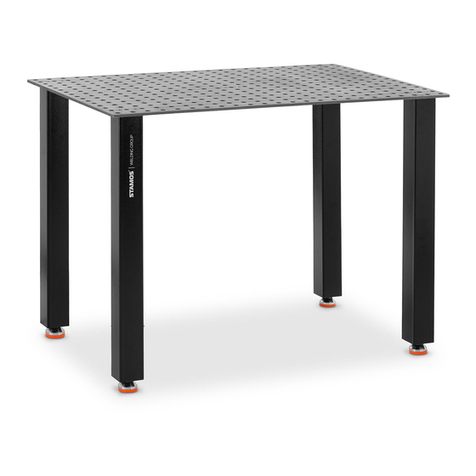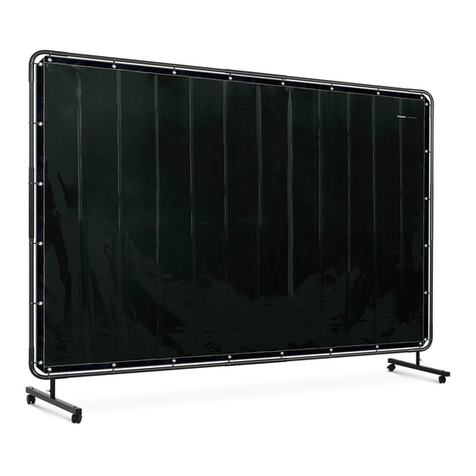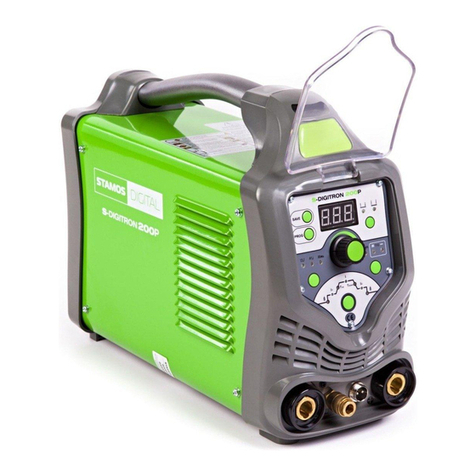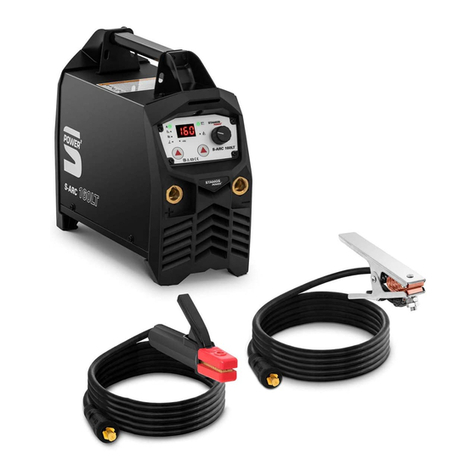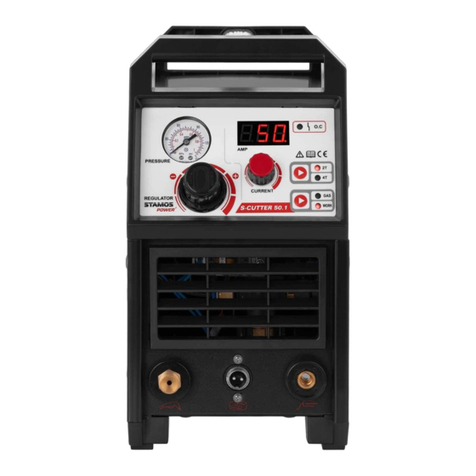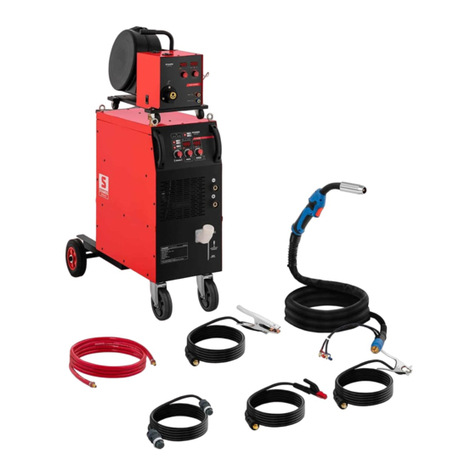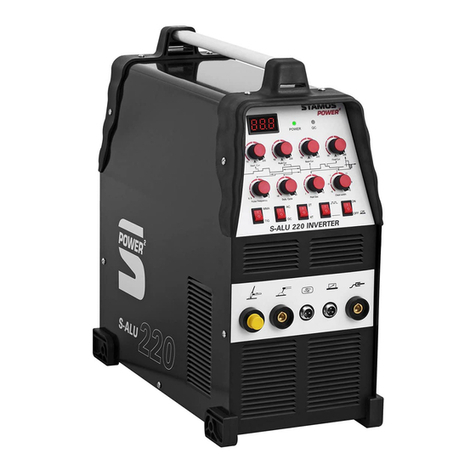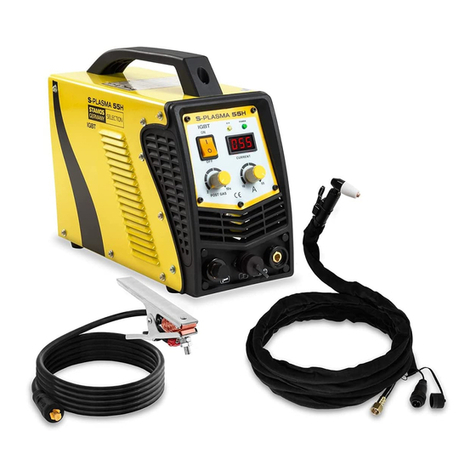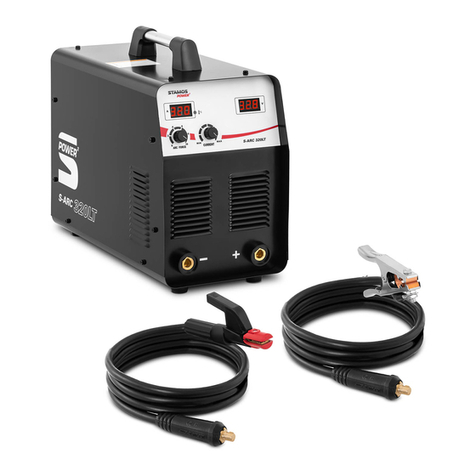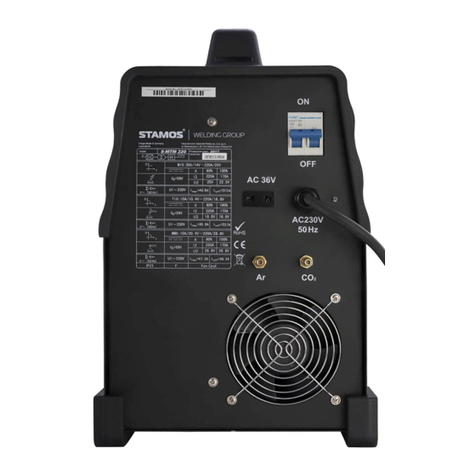
4 5
Rev. 04.04.2022 Rev. 04.04.2022
• Disconnect the Power Cord Plug from the power source before making any
adjustments, changing accessories, or storing the tool. Such preventive safety
measures reduce the risk of starting the tool accidentally.
• Store idle tools out of reach of children and other untrained persons.Tools are
dangerous in the hands of untrained users.
• Maintain tools with care. Keep cutting tools maintained and clean. Properly
maintained tools are less likely to bind and are easier to control. Do not use
a damaged tool.Tag damaged tools “Do not use” until repaired.
• Check for misalignment or binding of moving parts, breakage of parts, and any
other condition that may affect the tool’s operation. If damaged, have the tool
serviced before using. Many accidents are caused by poorly maintained tools.
• Use only accessories that are recommended by the manufacturer for your model.
Accessories that may be suitable for one tool may become hazardous when used
on another tool.
Service
• Tool service must be performed only by qualied repair personnel. Service or
maintenance performed by unqualied personnel could result in a risk of injury.
• When servicing a tool, use only identical replacement parts. Use of unauthorized
parts or failure to follow maintenance instructions may create a risk of electric
shock or injury.
SPECIFIC SAFETY RULES
• Maintain labels and nameplates on the tool.These carry important information. If
unreadable or missing, contact our service team for a replacement.
• Always wear the approved safety impact eye goggles and heavy work gloves when
suing the tool. Using personal safety devices reduce the risk for injury.
• Maintain a safe working environment. Keep the work area well lit. Make sure
there is adequate surrounding workspace. Always keep the work area free of
obstructions, grease, oil, trash, and other debris. Do not use a power tool in areas
near ammable chemicals, dusts, and vapors. Do not use this product in a damp
or wet location.
• Avoid unintentional starting. Make sure you are prepared to begin work before
turning on the tool.
• Never leave the tool unattended when it is plugged into an electrical outlet.Turn
off the tool, and unplug it from its electrical outlet before leaving.
• Always unplug the tool from its electrical outlet before performing and inspection,
maintenance, or cleaning procedures.
• Prevent eye injury and burns. Wearing and using the approved personal safe ty
clothing and safety devices reduce the risk for injury.
• Wear the approved safety impact eye goggles with a welding helmet featuring at
least a number 10 shade lens rating.
• Leather leggings, re resistant shoes or boots should be worn when using this
product. Do not wear pants with cuffs, shirts with open pockets, or any clothing
that can catch and hold molten metal or sparks.
EN
• Keep clothing free of grease, oil, solvents, or any ammable substances. Wear dry,
insulating gloves and protective clothing.
• Wear an approved head covering to protect the head and neck. Use aprons, cape,
sleeves, shoulder covers, and bibs designed and approved for welding and cutting
procedures.
• When welding/cutting overhead or in conned spaces, wear ame resistant ear
plugs or ear muffs to keep sparks out of ears.
• Prevent accidental res. Remove any combustible material from the work area.
• When possible, move the work to a location well away from combustible; protect
the combustibles with a cover made of re resistant material.
• Remove or make safe all combustible materials for a radius of 35 feet (10 meters)
around the work area. Use a re resistant material to cover or block all open
doorways, windows, cracks, and other openings.
• Enclose the work area with portable re resistant screens. Protect combustible
walls, ceilings, oors, etc., from sparks and heat with re resistant covers.
• If working on a metal wall,ceiling,etc.,prevent ignition of combustibles on the other
side by mobbing the combustibles to a safe location. If relocation of combustibles
is not possible, designate someone to serve as a re watch, equipped with a re
extinguisher, during the welding process and for at least one half hour after the
welding is completed.
• Do not weld or cut on materials having a combustible coating or combustible
internal structure, as in walls or ceilings, without an approved method for
eliminating the hazard.
• Do not dispose of hot slag in containers holding combustible materials. Keep a re
extinguisher nearby and know how to use it.
• After welding or cutting, make a thorough examination for evidence of re. Be
aware that easily visible smoke or ame may not be present for some time after
the re has started.
• Provide adequate ventilation in work areas to prevent accumulation of ammable
gases, vapors, and dust. Do not apply heat to a container that has held an unknown
substance or a combustible material whose contents, when heated, can produce
ammable or explosive vapors. Clean and purge containers before applying heat.
Vent closed containers, including castings, before preheating, welding, or cutting.
• Avoid overexposure to fumes and gases.Always keep your head out of the fumes.
Do not breathe the fumes. Use enough ventilation or exhaust, or both, to keep
fumes and gases from your breathing zone and general area.
• Where ventilation is questionable, have a qualied technician take an air sampling
to determine the need for corrective measures. Use mechanical ventilation to
improve air quality. If engineering controls are not feasible, use an approved
respirator.
• Work in a conned area only if it is well ventilated, or while wearing an air-supplied
respirator.
• Have a recognized specialist in Industrial Hygiene or Environmental Services check
the operation and air quality and make recommendations for the specic welding
or cutting situation.
ENEN












